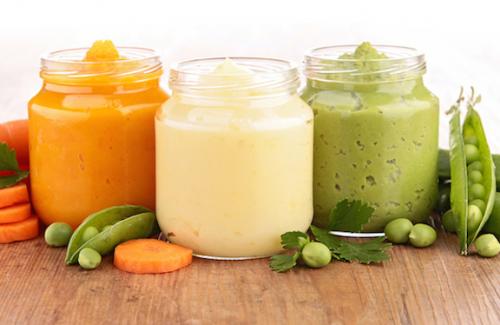Organic Baby Food Market Proliferating on Account of Rising Awareness Amongst Parents

During the farming of non-organic food products, farmers employ chemical fertilizers, herbicides and pesticides in order to increase the overall food production and monetary profits, and to shield the crops from various pests and disease-carriers. Spraying these chemicals leaves behind residues onto the crop which can enter the food chain, thereby degrading the nutritional value of the crop. While an adult can withstand the affects of non-organic food products owing to their strong immunity, an infant has a feeble immune system which undergoes crucial development during the initial years. At this critical time, it is mandatory to limit the infants’ exposure to dangerous chemicals by providing them with chemical-free organic food. Organic baby food is produced and processed without the use of pesticides, antibiotics, growth hormones and other hazardous chemicals. In comparison with conventionally produced baby food, organic baby food maintains strict standards and undergoes rigorous inspection before acquiring the organic label. As per the organic baby food market report by IMARC Group, the market reached a value of more than US$ 5 Billion in 2017.
Government support is bolstering the market growth
One of the key trends witnessed in the food industry is a shift towards organic food products. This can be accredited to a rising awareness regarding the disadvantages of consuming conventionally grown food products. Early exposure to pesticides can make babies vulnerable to health problems like neuro-development damage. In line with this, the governments of several nations, particularly in the developing regions, are taking initiatives for encouraging the use and production of organic baby food as it does not cause damage to the environment as well as an infant’s immune system. Some of the other factors which are facilitating the growth of the market include rapid urbanisation, increasing working population, growing number of nuclear families and improved distribution channels. However, stringent government regulations concerning product labelling and expensive price point of organic baby food products can hamper the growth prospects of the market. Looking forward, the global organic baby food market size is expected to reach US$ 10 Billion by 2023, exhibiting a CAGR of 10% during 2018–2023.
Major product type and distribution channel
On the basis of type, the market is classified as RTE (ready-to-eat) baby food, milk formula, dried baby food and others. Presently, RTE baby food is one of the most popular product type, accounting for the majority of the organic baby food market share. RTE baby food offers convenience owing to which it can be served immediately without the hassle of cooking.
Based on distribution channel, the market is segregated as supermarkets and hypermarkets, specialty stores, convenience stores, online retailers and others. Amongst these, supermarkets and hypermarkets exhibit a clear dominance in the market as they offer a one-stop shopping experience to the consumers by providing variety of products under one roof.







Comments